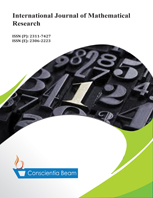On Statistical Definition of Free and Fair Election: Bivariate Normal Distribution Model
DOI:
https://doi.org/10.18488/journal.24/2014.3.5/24.5.49.62Abstract
The coining of the expression free and fair was a good way towards evaluating elections, but fell short of qualifying its real quantification to guide an informed judgment; this paper provides guidance for such a definition. Data from the Uganda National Baseline Survey were used to assess the dynamics of the determinants for a free and fair election. All determinants were statistically significant (p<0.01) for the two multinomial models (free and fair election models). The predicted probabilities for free and fair were each used as inputs to form probability distribution function could jointly define the expression free and fair using a bivariate normal distribution. A strong positive correlation was identified between an election being free and fair (ρ=0.9693,p<0.01) implying the reliability of the statistical models in jointly considering free and fair. The study recommends development of central statistical computational system to inform electoral bodies and judges in passing scientifically backed ruling on whether an election is free and fair. A threshold percentage for any election to be referred to as free and fair could be developed either deterministically or stochastically and provisions of which passed under electoral law.

